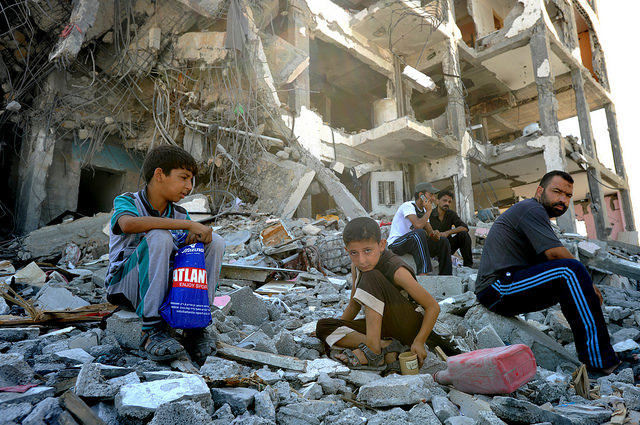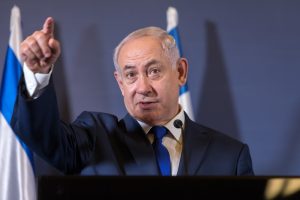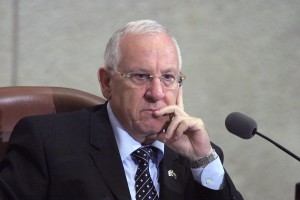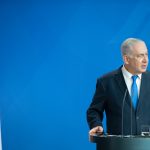by Emile Nakhleh
As Israelis and Palestinians continue their discussions in Cairo, it’s time for the international community and the regional states to begin searching for a long-term economic and political solution for the Gaza Strip. Let’s not be lulled, however, into believing that a Gaza-alone solution will resolve the larger Israeli-Palestinian conflict.
The two issues are linked and must be treated as parts of the same conflict. But for now, the focus should be on Gaza. Second, some of the ideas below have been around for years. Gaza’s recovery is not rocket science; these solutions are as practical and doable today as they were when they were raised decades ago.
Third, the proposed projects will benefit Gaza and Israel, Egypt, the West Bank, and Jordan. If Gaza is back on its feet economically and the conflict subsides, Israelis living in southern Israel would begin to experience normality and calm in their daily life.
Before proceeding with these regional projects, however, immediate steps should be taken to rebuild Gaza’s homes, hospitals, schools, and physical infrastructure destroyed during the recent Israeli assault.
As part of the first Camp David process in 1978, I participated in an advisory committee in Washington to explore economic ideas and job-creating projects for Gaza. Three projects were discussed at the time and recommended for implementation. Unfortunately, they were shelved.
The projects included a regional water desalination plant in Gaza, a regional power plant, and a regional trucking business. The projects were expected to create thousands of jobs in Gaza and across the immediate region and energize commerce in that part of Palestine.
Implementing these projects over the next 3-5 years would be the backbone of Gaza’s economic recovery. Their implementation would require the convening of a regional conference consisting of Israel, the Palestinians, Egypt, Jordan, Saudi Arabia, Qatar, the United Arab Emirates, Turkey, and the Quartet under the auspices of the UN Security Council and UNDP. Once operational, the projects would propel Gaza toward economic independence in the context of ironclad regional economic agreements.
Development
The desalination and power plants would have the capacity to provide desalinated water and power to the Gaza Strip, northern Sinai, portions of the Negev in southern Israel, the southern end of the West Bank, and parts of Jordan.
In the summer of 1987, during one of my research trips to Gaza, a Palestinian child asked me, “Why are all our soccer fields dirt and theirs [Jewish settlements] grass?” Desalinated water would help revive Gaza’s agricultural sector, especially citrus fruits, date palms, vegetables, and flowers. It would also improve the quality of life across the Gaza Strip. Public parks and soccer fields would become green.
Renewable sun and wind energy technology using windmills and solar panels could power the proposed power grid in Gaza. Hospitals, schools, public buildings, businesses, and training centers would have a limitless source of power without being dependent on generators, fuel to run them, or the Israeli power grid.
The regional trucking business, the third of three projects, would be a critical component of Gaza’s resurgent agriculture. A truck route from Gaza to the Saudi-Qatar border would go through southern Israel, the West Bank, and Jordan. Trucks carrying produce from Gaza would operate all year round without being hampered by the winter weather.
Older routes from Lebanon and Syria were often subject to the vagaries of winter, especially mountain snows and cold winds. During the winter months, roads were often closed, which interrupted the flow of goods and produce to Gulf countries.
Truck driving and maintenance, truck stops, gas stations, restaurants, and refreshment kiosks would provide hundreds of jobs along the route between Gaza and the Gulf. Like the water and power grids, the trucking route will have to be guaranteed by the regional states and should not be held hostage to interstate disagreements or conflicts.
Several years back, while doing field research in the West Bank and Gaza, I saw trucks haul cucumbers and other produce from Gaza to the Gulf via the West Bank and Jordan.
When I queried Gaza farmers about how the occupation affected them in their daily lives, they pointed to their spoiled produce. They told me, “Whenever the occupation is upset about something, truck traffic is halted, and the produce — especially tomatoes and cucumbers — rots on the vine.” When the trucks are delayed, the produce is not shipped, and the farmer pays the price.
A seaport and an airport are two additional key ingredients in the strip’s economic recovery. These two major infrastructure projects would help Gaza’s businesspeople break the Israeli blockade and eliminate dependency on the Egyptian and Israeli border crossings.
More importantly, there would be no need for tunnels. Gaza’s tunnel economy produced a wealthy class within the Hamas power structure. Unfortunately, the wealth did not trickle down to the population.
For the first five years of operations, the seaport and the airport would be staffed and supervised by UN personnel, including from Israel, Palestine, Egypt, and Jordan. Imports and exports would be subject to inspection in order to prevent the import or export of contraband. The airport would be regional in nature and would have connecting flights to Tel Aviv, Amman, and Cairo. Airport financial and security agents would inspect goods shipped on these planes in and out of Gaza.
The seaport would not only facilitate commerce but also the fishing industry. Extending the fishing rights out by several miles, as negotiators in Cairo are contemplating, would also increase the restaurant business. A resurgent fishing industry would employ hundreds of workers throughout the year and seasonally.
Education
No long-term recovery could succeed without modern and technical education. Dozens of two-year vocational schools and training centers should be built across Gaza to train students in such fields as nursing, medical and health services, computer technology and electronics, finance, banking, plumbing, carpentry, auto mechanics, building and construction, and tourism and hospitality.
Two-year business colleges, in partnership with banks and other financial institutions, would encourage young men and women to invest in entrepreneurial start-ups. As these initiatives succeed and spread across the region, they would begin to create jobs.
The envisioned partnership between the public sector and the private sector would encourage economic growth, create a middle class, and the lift the people of Gaza out of poverty.
Government
None of this would succeed without a transparent, accountable, non-ideological, and trusted government operating under the rule of law. It should guarantee freedom of thought, innovation, speech, assembly, and association. The PA, the Hamas leadership, and Israel will have to approve the group of experts and technocrats at the helm.
For the first five years, the government will work very closely with such international organizations as the World Bank, the International Monetary Fund, the Economic and Social Council, and the World Health Organization. Big projects would be subject to supervision by these bodies.
Israel and the new government would conclude agreements within the first year regarding the movement of people and goods between Gaza and Israel. They would sign protocols to combat terrorism, extremism, hate crimes, and financial criminal activities. Israeli and Palestinian security officers would man the border crossings jointly.
The new government would have a police force to maintain law and order, but no military. As it begins its work and the recovery gets under way, there will be no economic or military blockade, no overhead flights by Israeli military jets or Israeli unmanned drones, and no targeted killings.
Long Road Ahead
At the risk of stating the obvious, the proposed recovery roadmap will be difficult to achieve. Israel, the Arabs states, and Turkey will have to collectively take the lead for the sake of ending the conflict in their neighborhood and bringing economic prosperity and hope to their peoples. This is not only about Gaza and the Palestinians, but also about the whole region.
I expect that many advocates and beneficiaries of the status quo on both sides of the divide would dismiss this recovery prescription as fantasy. But as Tom Friedman wrote in a recent opinion piece in the New York Times, “I can tell you 17 reasons that this won’t happen. I just can’t think of one other stable way out.”
Editor’s note: Read Emile Nakhleh’s two previous recent articles on the Gaza crisis, “The Two-State Option is Dead: Time for New Thinking,” and “How to End the Gaza War.”
Photo: Palestinians search through the rubble of their destroyed homes hit by Israeli strikes in the northern Gaza Strip on Aug. 7, 2014. Credit: UN Photo/Shareef Sarhan






Interesting post, but isn’t isn’t it just another in the long list of ideas for Gaza? Israel just keeps bombing the infrastructure, the outside experts keep repeating themselves, and the Gaza suffers. I watched Max Blumenthal at a Israeli youth conference on Y-tube, where Netanyahoo spoke, sponsored by a few of the western money backers, comparing it to getting high-as in marijuana-over Zionism, with IDF soldiers dancing, which I stopped after a short time. Brainwashing, getting high, P.R. to the max. Of course, the harsh realities are not shown. Enlisting the youth, isn’t that always the way these regimes end up,as in the desperate final days? The Zionist Youth Movement.
All the rebuilding won’t do a bit of good if Iran keeps shipping arms to Hamas and they keep locating it within civilian structures. It’s even more apparent that if Hamas diverts building materials badly needed for schools, homes and infrastructure and instead uses it to build a tunnel system rivaling the North Vietnamese, then we’re just going to be revisiting this bloody conflict again and again and more innocent people will die and it’ll never be over.